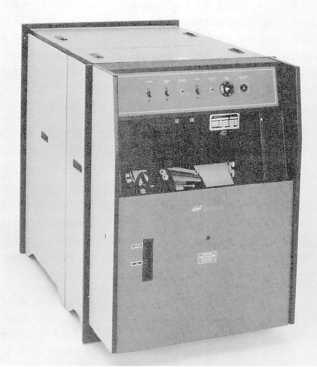corrections are then sent through a translator device to
the printer. This system has essentially been replaced
with electronic darkrooms at Navy imaging facilities.
On-Easel Analyzers
An on-easel color analyzer (fig. 12-5) is an
electronic photometer used to measure the illumination
and three color primaries of light on the baseboard of
the enlarger. These photometers take these
measurements through tricolor filters.
On-easel measurements are made conveniently by
placing a small probe on the reference area of the
projected image on the baseboard. This small probe is
connected to a fiber-optic light tube that carries the light
from the reference area to the body of the photometer.
Color analyzers are programmed using standard
negatives printed by the trial-and-error method of color
printing. Once a good color print is made from the
standard negative, the image luminance of the master
negative is measured from the reference area. This
reference area is read through red, green, and blue
tricolor filtered sensors and finally without filters over
the photocell. The analyzer scale is then zeroed for each
condition. You then insert the new production negative
in the enlarger and place the photocell on the same
projected reference area on the easel. The aperture and
dichroic filters are then changed until the meter is zeroed
out once again.
Most on-easel color analyzers have a number of
memory channels so you can store programs for
different film or paper types.
The advantage of on-easel color analyzers is that,
unlike off-easel evaluation, each measurement
compensates for filter fading, lamp aging, and different
image magnifications. Exposure and filtration are given
directly. A disadvantage is that the readings must be
made under the same conditions as color printing on an
enlarger (complete darkness except for the illumination
of the projected image of the enlarger). Both on-easel
and off-easel evaluation depend strongly on accurate
readings and placement and choice of a good reference
area.
Two methods of electronically aided color
evaluation are used. They are spot or small-area
measurements and large-area or integrated measure-
ments. Small-area measurements made on the easel are
the most accurate; however, a small-reference area is not
always possible.
When small-reference areas are not provided,
large-area measurements can be taken. Large-area
measurements are made usually from the whole
negative area. For off-easel evaluation using a
Courtesty of Kreonite Inc.
302.262X
Figure 12-6.–Kreonite color processor, Model KCP-16.
densitometer, a large photocell is used to take such
readings. For on-easel analyzers, the image is integrated
by placing diffusion material between the negative and
the photocell. You then place the photocell and sample
various areas of the projected image. These sample areas
are then “‘integrated” to gray as though they were a
typical subject. This type of evaluation does not
compensate for images that do not contain typical color
or tonal distributions; for example, when the subject of
a negative is predominantly red, an integrated reading
overcompensates and a cyan print results. That is called
subject anomaly or subject failure. This is the method
used by many automatic printers. Color prints, such as
these, must be color corrected manually.
COLOR PRINT PROCESSING
Color printing paper must be handled and processed
in complete darkness because color paper is panchro-
matic. Like color film, time and solution temperature is
much more critical than in black-and-white processing.
Because the processing of color paper must be very
consistent, color prints are not processed in trays. Color
paper is always processed in automatic color print
processors (fig. 12-6) or rotary drum processors.
12-13



